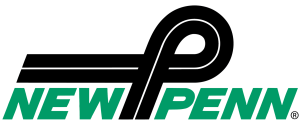
New Penn
With more than 2,000 employees and a fleet of over 850 tractors and 1,700 trailers, Lebanon, Pennsylvania-based New Penn provides next-day shipments through a network of 24 service centers located in the Northeastern United States, Quebec, Ontario and Puerto Rico. Working jointly with other partner carriers, the company also provides service to portions of the West, Midwest and Southeast regions of the U.S. and all of Canada.
Companies strive for growth, but growth necessitates change. As a result of its success, New Penn needed to enlarge its customer number field, but that field is scattered throughout considerable application code.
How could the company estimate the impact of the work ahead? More importantly, how could it ensure that no occurrences of the customer number field were overlooked?
Challenge
Chris Nickchen, former IT Manager at New Penn, saw the field resizing work as akin to what was done to solve the Y2K problem. Back then, the company built a tool to deal with the issue, but the tool hadn’t been maintained over the years. New Penn needed new software that would provide similar functionality, but operate in today’s environment and meet the new requirements.
Solution
After evaluating a few options, New Penn chose Fresche’s X-Resize. X-Resize greatly simplifies and automates the reengineering of fields. Its comprehensive series of system-wide reports and drill-down inquiries indicate the affected programs, files, displays, fields, variables, and so on. In addition, exception reports show instances where the conversion of the display files cannot be completed automatically because of, for example, overlapping or screen size restrictions. Developers can also extend the comprehensive exception reporting included with X-Resize by writing their own reports over the X-Resize repository.
Much of the necessary code revision can be done automatically by X-Resize, but developers retain complete control over the process by defining rules that direct or restrict the revisions that X-Resize makes. And nothing is moved into production until IT verifies that the revisions are accurate and complete. As part of its functionality, X-Resize takes the source code, makes the necessary changes and moves the modified code to another physical file in another library. Developers can then see the before and after code, print the modified source, review it, and perform comprehensive queries to determine what was changed.
Results
X-Resize paid for itself many times over at New Penn. The company estimates that the software reduced the time required to complete the customer field change project by approximately 13 to 14 person-years.
And that’s not the end of the story. New Penn plans to expand its shipment tracking numbers shortly. Former IT Manager Chris Nickchen expects that X-Resize will deliver similar savings for that project as well.
“When you don’t know all of the impacts of a change, that’s when you bring in X-Resize,” explained Nickchen. “What you’re primarily doing is a batch search. Interactive screens then help you confirm that you first find all of the changes at the database level. Then you let X-Resize go crazy and take all of the database files and traverse through the system line-by-line until it finds all of the affected physical files, displays, printers, and parameters.”


